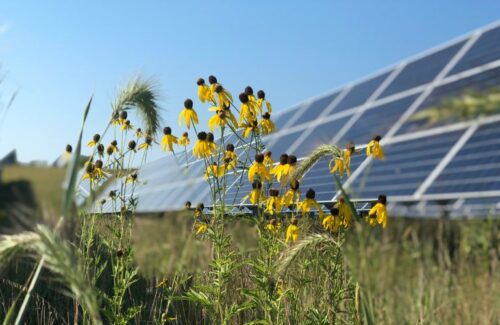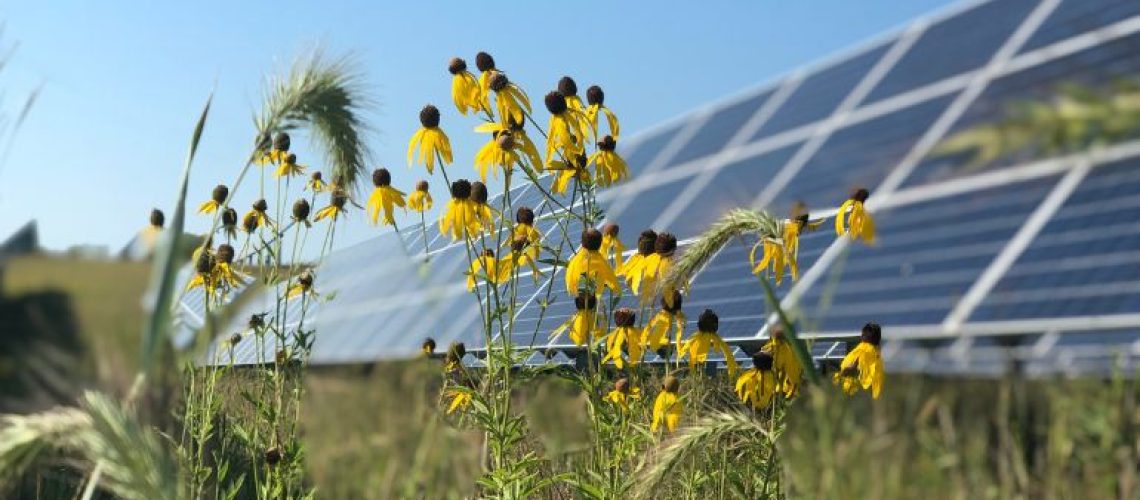 The U.S. Department of Energy (DOE) announced $14 million in funding to researchers to study how solar energy infrastructure interacts with wildlife and ecosystems. These projects are part of DOE’s nearly $100 million renewable power research portfolio that invests in innovative, cost-effective solutions to minimize wildlife impacts — and maximize the environmental benefits — of renewable energy technologies. As renewable energy deployment grows to combat the climate crisis and achieve President Biden’s goal of net-zero carbon emissions by 2050, DOE is supporting research to ensure renewable energy deployment also benefits native wildlife and ecosystems.
The U.S. Department of Energy (DOE) announced $14 million in funding to researchers to study how solar energy infrastructure interacts with wildlife and ecosystems. These projects are part of DOE’s nearly $100 million renewable power research portfolio that invests in innovative, cost-effective solutions to minimize wildlife impacts — and maximize the environmental benefits — of renewable energy technologies. As renewable energy deployment grows to combat the climate crisis and achieve President Biden’s goal of net-zero carbon emissions by 2050, DOE is supporting research to ensure renewable energy deployment also benefits native wildlife and ecosystems.
“DOE is committed to ensuring that renewable energy deployment protects natural environments,” said U.S. Secretary of Energy Jennifer M. Granholm. “This first-ever DOE investment in tools to better understand how solar energy infrastructure interacts with native wildlife and the environment will help increase adoption of ecosystem-friendly clean energy deployment.”
Solar energy development can benefit local communities, protect native wildlife, and foster healthy ecosystems. However, there is little data about how large-scale solar facilities affect wildlife, making it difficult for developers to use best practices when building and managing solar facilities. With today’s investments, DOE is taking critical steps to address this research gap. In addition, new solutions like establishing pollinator habitats under solar arrays can support insects and other wildlife that pollinate crops. These are a type of benefits known as ecosystem services, which can also include carbon sequestration and improved soil and water quality.
Through the Deploying Solar with Wildlife and Ecosystem Services Benefits (SolWEB) funding program, researchers will study the interactions of pronghorn, pollinators, birds and other species with solar energy facilities in 26 states. This funding program also includes DOE’s first-ever investments in tools that can assess and help optimize ecosystem services at solar installations.
Projects addressing wildlife interactions ($8.8 million):
- Cornell University (Ithaca, NY): $2 million to use an emerging technology to quantify insect biodiversity and pollinator communities at solar facilities.
- Renewable Energy Wildlife Institute (Washington, DC): $600,000 to design and build a solar-wildlife data-sharing infrastructure that enables stakeholders to assess solar-wildlife interactions and improve wildlife management practices.
- Sandia National Laboratories (Albuquerque, NM): $2 million to develop smart surveillance technology to monitor bird activity and study measures to prevent bird fatalities at concentrating solar-thermal power facilities.
- University of Arkansas (Fayetteville, AR): $1.3 million to assess biodiversity at large-scale solar facilities to gain an understanding of solar-wildlife interactions and benefits from native vegetation management practices in Arkansas, Kansas, and Oklahoma.
- University of Massachusetts at Amherst (Amherst, MA): $1.2 million to conduct the first assessment of avian reproductive success at solar facilities and apply emerging bioacoustics technology to monitor native insect activity in the Northeast.
- Wildlands Network (Santa Fe, NM): $1.7 million to evaluate the response of pronghorn and other mammals to installation of utility-scale solar energy systems in Colorado, Utah, Arizona, and New Mexico.
Projects addressing ecosystem services ($5.3 million):
- Argonne National Laboratory (Lemont, IL): $2 million to develop a national soil data collection system at solar facilities that enables soil health and soil ecosystem services assessments.
- Cornell University (Ithaca, NY): $1.5 million to develop a tool for assessing the costs and benefits of ecosystem services provided by large-scale solar facilities for the solar industry and host communities in the Northeast.
- Great Plains Institute (Minneapolis, MN): $1.8 million to create an equitable ecosystem services framework based on host community and tribal priorities in the Midwest.
This funding complements a robust portfolio of research on renewable energy development and wildlife. DOE has over $30 million invested in research to understand how birds, bats and marine animals interact with wind turbines and develop technologies to reduce impacts. DOE has over $40 million invested in hydropower and marine energy research to protect fish, other wildlife, oceans, and rivers, including an upcoming $4 million funding opportunity to advance fish passage and protection technologies in hydropower. DOE is also supporting research in solar energy development to monitor avian interactions and maximize benefits to pollinators, soil and water.
News item from DOE






